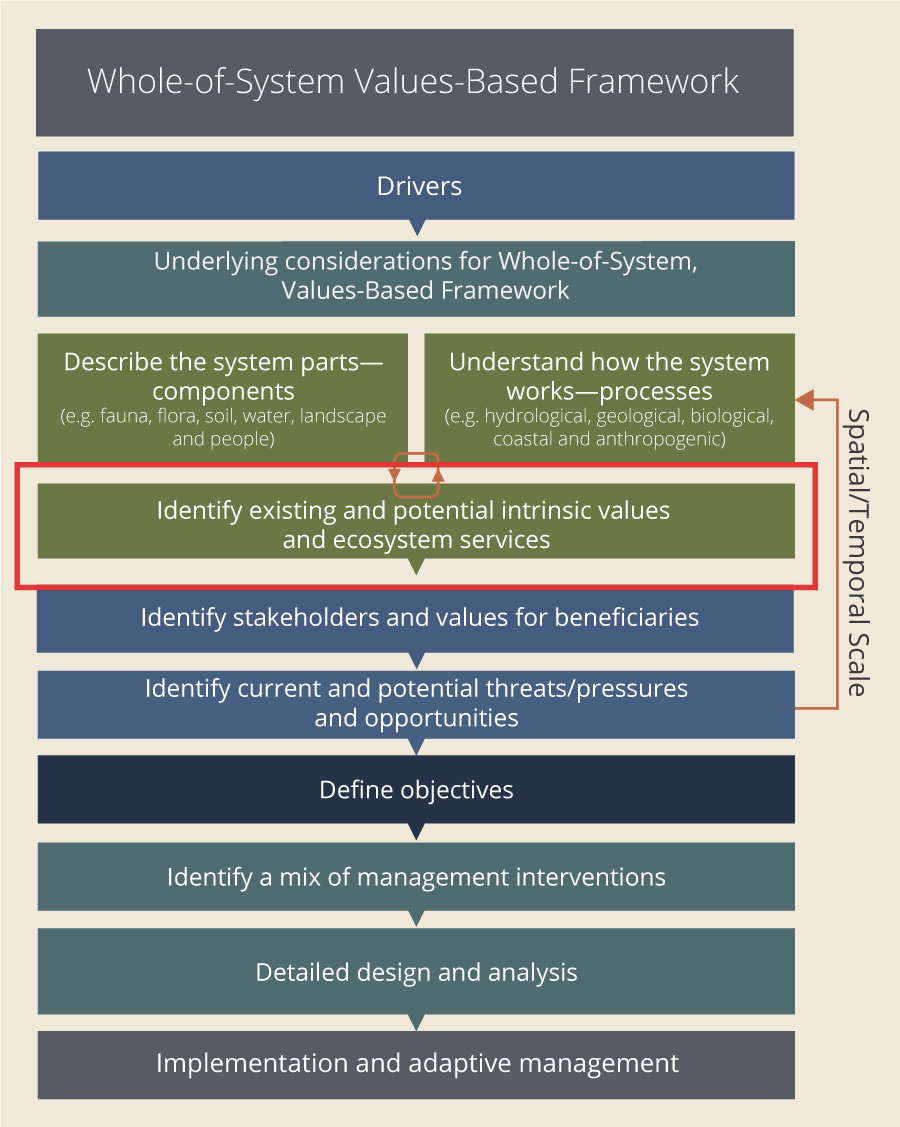|
|
Identify existing and potential intrinsic values and ecosystem servicesComponents and processes of a system combine to provide the intrinsic and existence values and ecosystem services (services) that people value. Identifying and documenting the existing and potential services that a system can provide is done by identifying the components and processes of a system that generate a service. For example, for a palustrine wetland to perform denitrification for water quality improvement (a service), it must have vegetation as a carbon source, denitrifying bacteria in the soil, anoxic conditions, and hydrological processes that allow the nitrogen from inflows to engage with the wetland. The services provided by a system are dependant on the condition of the system, and the processes affecting the system. Undertaking condition assessments (such as WetCAT) and documenting these assessments can form part of the information base required for the Framework. The value of services to humans, varies depending on the human use and benefits from the environment[7]. Impacts to the services provided by an ecosystem can directly or indirectly affect a social ecological system[6]. Identifying and understanding the services that an ecosystem generates is important to help decision-makers:
Ecosystem service assessments provide information about the services the system is providing[5]. A list of ecosystem services based on the Common International Classification of Ecosystem Services (CICES)[4] has been developed for this Framework, and can be used as the basis for any ecosystem services assessment. At a system-scale, these assessments should consider:
To maximise the services provided by the system, future potential ecosystem services should be identifed, including any modification or change to components or processes to achieve these outcomes. References
Last updated: 30 June 2022 This page should be cited as: Department of Environment, Science and Innovation, Queensland (2022) Identify existing and potential intrinsic values and ecosystem services, WetlandInfo website, accessed 8 May 2025. Available at: https://wetlandinfo.des.qld.gov.au/wetlands/management/whole-system-values-framework/services.html |

 — Department of the Environment, Tourism, Science and Innovation
— Department of the Environment, Tourism, Science and Innovation


